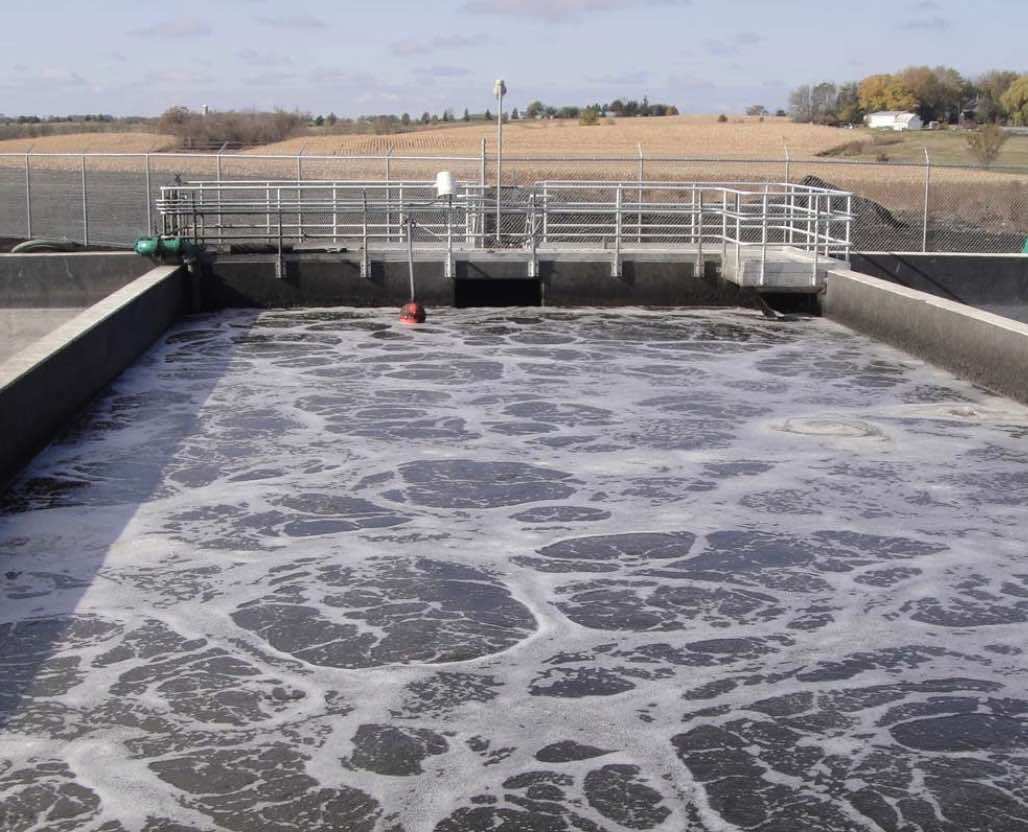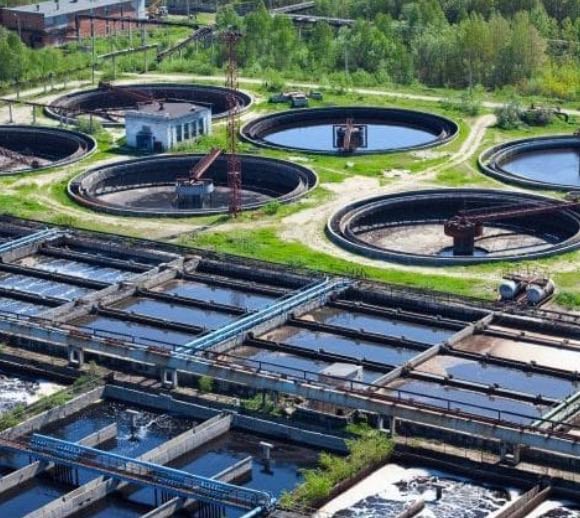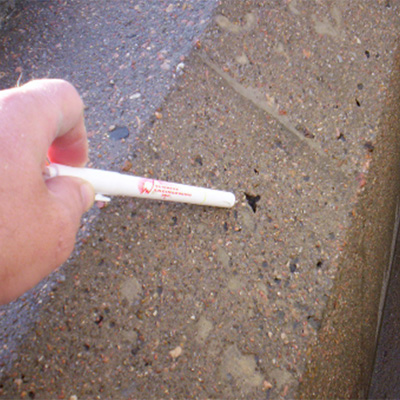
Surface Prep and Coating Systems for Equalization tanks in Wastewater
Water treatment equalization tanks play a critical role in maintaining consistent flow rates and stabilizing water quality throughout treatment processes.
- High Performance Coatings
What are Equalization Tanks and why are they used in municipal wastewater applications?
Surface Prep and Coating Systems for Equalization tanks in Wastewater Exposure
Water treatment equalization tanks play a critical role in maintaining consistent flow rates and stabilizing water quality throughout treatment processes. However, the success and longevity of these systems heavily depend on proper surface preparation and coating selection. The chemical environments in pre-equalization and post-equalization tanks present unique challenges that require proven, high-performance coating systems like those offered by Tnemec and Epoxytec.
Understanding the Operating Environments
Pre-Equalization Tanks
Pre-equalization tanks receive raw, untreated water containing variable concentrations of suspended solids, organic matter, and potentially aggressive chemicals. These tanks experience:
- Fluctuating pH levels (typically 6.0-8.5)
- High concentrations of suspended solids and debris
- Potential presence of oils, greases, and organic contaminants
- Temperature variations based on seasonal and process conditions
- Mechanical stress from mixing equipment and flow dynamics
Post-Equalization Tanks
Post-equalization tanks handle partially or fully treated water with more stable chemical characteristics. However, they still face challenges including:
- Residual treatment chemicals (chlorine, ozone, or other disinfectants)
- More consistent but potentially elevated pH levels
- Lower but still present suspended solids
- Potential biofilm formation on surfaces
- Continued mechanical stress from pumping and mixing operations
Critical Surface Preparation Requirements
Assessment and Planning
Before any surface preparation begins, conduct a thorough assessment of existing conditions. Document surface contamination, existing coating failures, substrate condition, and environmental constraints. This evaluation determines the appropriate preparation method and coating system selection.
Substrate Preparation Standards
For both tank types, achieve a minimum surface preparation standard equivalent to ICRI CSP 5 (Concrete Surface Profile). This level removes all loose material, laitance, curing compounds, and previous coatings while creating the optimal surface profile for coating adhesion to concrete substrates.
Key preparation steps include:
- Complete removal of all loose material, laitance, and failed coatings
- Creation of an angular surface profile between 2-4 mils (50-100 microns)
- Removal of all abrasive residue and contaminants
- Verification of concrete moisture content and pH levels
- Maintenance of proper environmental conditions (temperature, humidity, dew point)
Environmental Controls
Maintain strict environmental controls during preparation and application. Surface temperature must remain at least 5°F above dew point, with relative humidity below 85%. Wind conditions should not exceed specifications for the chosen application method.
Proven Coating System Solutions
Tnemec System: Series 218 Resurfacer and Series 436
Tnemec Series 218 Resurfacer serves as the foundation for this high-performance system. This two-component, water-based cementitious epoxy surfacer provides excellent adhesion to properly prepared concrete surfaces while offering up to 1" application thickness per coat. The Series 218 penetrates into the concrete substrate and creates an ideal monolithic base for the subsequent topcoat application.
Tnemec Series 436 represents a premium solution for demanding water treatment environments. This high-build, glass-flake reinforced epoxy coating provides exceptional chemical resistance, abrasion resistance, and long-term durability when applied over concrete substrates. Applied at 80-125 mils DFT, Series 436 creates a robust barrier against the harsh conditions found in both pre-equalization and post-equalization tanks.
Key advantages of the Tnemec system:
- Proven performance in municipal and industrial water treatment facilities
- Excellent chemical resistance to chlorine, ozone, and other treatment chemicals
- Superior mechanical properties including impact and abrasion resistance
- Low permeability preventing substrate deterioration
- Excellent adhesion characteristics to concrete when applied over Series 218
Epoxytec System: Ceramico Resurfacer and CPP Sprayliner
Epoxytec Ceramico functions as an advanced resurfacing primer that combines the benefits of epoxy chemistry with reinforcement. This innovative formulation provides exceptional adhesion to concrete substrates while offering enhanced surface build and durability compared to conventional surfacers.
Epoxytec CPP Sprayliner at 125 mils DFT delivers outstanding protection for water treatment applications. This high-build, structural and chemically resistant coating incorporates advanced polymer technology to provide superior performance against aggressive chemicals, mechanical abuse, and long-term environmental exposure when applied over concrete substrates.
Key advantages of the Epoxytec system:
- Advanced ceramic-reinforced primer technology
- Exceptional chemical resistance to acids, bases, and oxidizing agents
- Structural Epoxy
- Superior mechanical properties and impact resistance
- Excellent spray application characteristics for efficient installation
- Proven performance in challenging industrial environments
Application Specifications by Tank Type
Pre-Equalization Tanks
Tnemec System Application:
- Surface Preparation: ICRI CSP 5 profile on concrete substrate
- Tnemec Series 218 Resurfacer: Apply up to 1" as a surfacer (down to feather finish)
- Tnemec Series 436: Apply at 80-125 mils DFT as finish coat
Epoxytec System Application:
- Surface Preparation: ICRI CSP 5 profile on concrete substrate
- Epoxytec Ceramico: Apply up to 1" as a surfacer (down to feather finish)
- Epoxytec CPP Sprayliner: Apply at 125+ mils DFT as finish coat
Post-Equalization Tanks
Both systems provide excellent protection for post-equalization environments. The choice between Tnemec and Epoxytec systems often depends on specific chemical exposures, application preferences, and project requirements.
Tnemec System: The proven combination of Series 218 and Series 436 offers reliable, long-term protection against treatment chemicals and mechanical stress.
Epoxytec System: The advanced Ceramico/CPP Sprayliner combination provides enhanced chemical resistance and may be preferred for facilities with below grade structures where a structural epoxy is needed for I&I protection.
Application Best Practices
Material Handling and Mixing
Both systems require careful attention to material handling and mixing procedures. Follow manufacturer specifications exactly for:
- Material storage temperatures
- Mixing ratios and procedures
- Pot life limitations
- Application temperature ranges
- Humidity requirements
Application Techniques
These high-build systems require skilled application techniques:
Spray Application: Use plural component spray equipment properly calibrated for each material. Maintain consistent spray patterns and overlap to ensure uniform thickness.
Thickness Control: Monitor wet film thickness continuously using appropriate gauges. Both systems require significant material buildup, making thickness control critical for performance and economy.
Environmental Monitoring: Maintain strict environmental controls throughout application. Document temperature, humidity, and dew point conditions.
Quality Control and Inspection
Pre-Application Inspection
- Verify surface preparation standards using ICRI Visual Concrete Surface Analysis
- Confirm surface profile using replica tape or digital gauges
- Test concrete moisture content and pH levels
- Document environmental conditions
During Application
- Monitor wet film thickness continuously
- Verify proper mixing ratios and procedures
- Document application rates and coverage
- Ensure proper substrate moisture conditions
Post-Application Verification
- Measure final dry film thickness using magnetic gauges
- Perform 100% holiday detection at appropriate voltage levels
- Conduct adhesion testing per ASTM D4541 when required
- Document final system thickness and appearance
Performance Expectations and Maintenance
Service Life Projections
When properly applied, both systems can provide:
- Tnemec System: 15-20+ years of service life with exceptional chemical resistance
- Epoxytec System: 15-20+ years of service life with structural characteristics
Maintenance Requirements
Both systems require minimal maintenance when properly applied:
- Annual visual inspections
- Immediate repair of any mechanical damage
- Periodic cleaning to remove biofilm or deposits
- Touch-up of minor coating defects before they propagate
Performance Monitoring
Establish baseline measurements and monitor coating performance over time:
- Document any changes in appearance or performance
- Track maintenance requirements and costs
- Evaluate system performance against expectations
- Use performance data to optimize future specifications
Cost-Benefit Analysis
Initial Investment
While both systems represent premium coating solutions with higher initial costs, they provide exceptional value through:
- Extended service life reducing replacement frequency
- Minimal maintenance requirements
- Reduced downtime for repairs
- Enhanced asset protection
Total Cost of Ownership
Consider the total cost of ownership over the system's service life:
- Material and application costs
- Maintenance and repair expenses
- Downtime costs for recoating
- Asset replacement costs
Both Tnemec and Epoxytec systems typically provide lower total cost of ownership compared to conventional coating systems due to their extended service life and reduced maintenance requirements.
Conclusion
Water treatment equalization tanks require robust protection from specialized coating systems designed for their unique challenges. Both the Tnemec Series 218/436 system and the Epoxytec Ceramico/CPP Sprayliner system offer proven solutions with excellent performance records in similar concrete applications.
The Tnemec system provides time-tested reliability with the glass-flake reinforced Series 436 offering exceptional chemical and mechanical resistance on concrete substrates. The Epoxytec system delivers advanced technology with ceramic-reinforced primer and high-performance sprayliner capabilities specifically formulated for concrete tank environments.
Selection between these systems should be based on specific project requirements, chemical exposures, application preferences, and long-term performance expectations. Both systems require proper concrete surface preparation, skilled application, and quality control measures to achieve optimal performance.
By partnering with qualified coating contractors experienced in these premium systems and following manufacturer specifications precisely, water treatment facilities can achieve decades of reliable protection for their critical concrete equalization tank infrastructure while minimizing total lifecycle costs.
LET OUR KNOWLEDGE AND EXPERTISE HELP ENSURE YOUR NEXT PROJECT IS SUCCESSFUL
Check out our related resources on this topic:
The Importance of Surface Preparation with High Performance Coatings
Surface Preparation of Ductile Iron Pipe & Fittings
Ultimate Guide to Surface Tolerant Epoxies
Determine What Coatings to Use Where
Don't miss these project profiles

Exploring Coatings for Water and Wastewater...
Water and wastewater treatment facilities play a...

Concrete Repair & Resurfacing in Wastewater...
Wastewater treatment facilities face some of the...

What Is SWAT Testing, & Why Is It Important?
Accelerated performance testing of coating and...